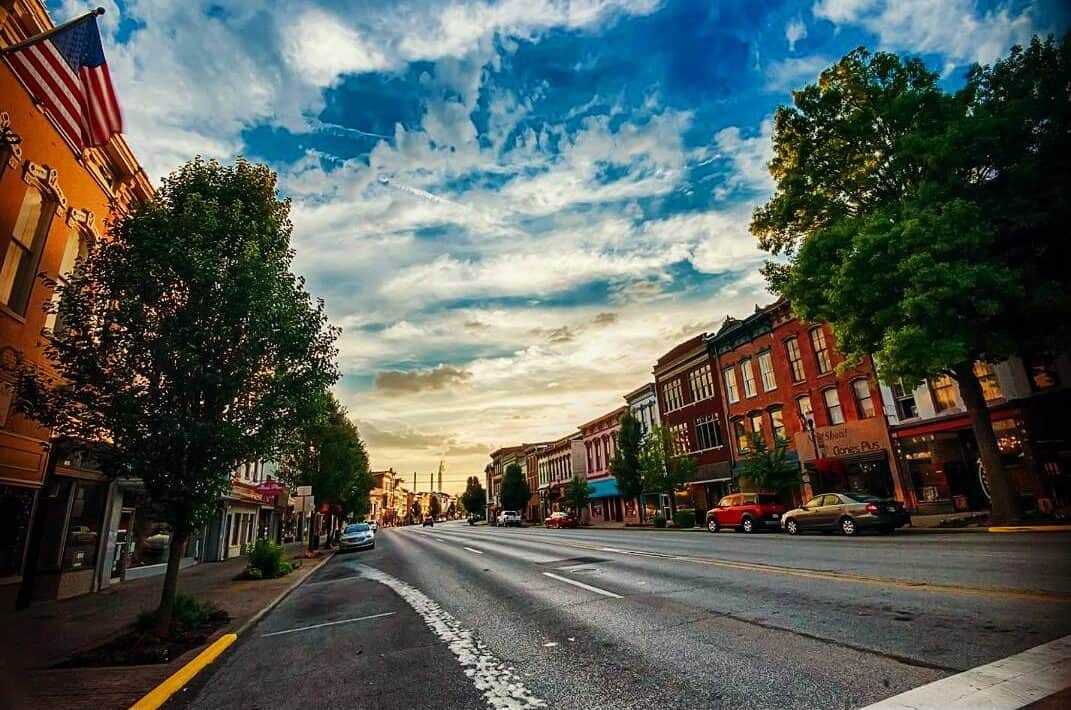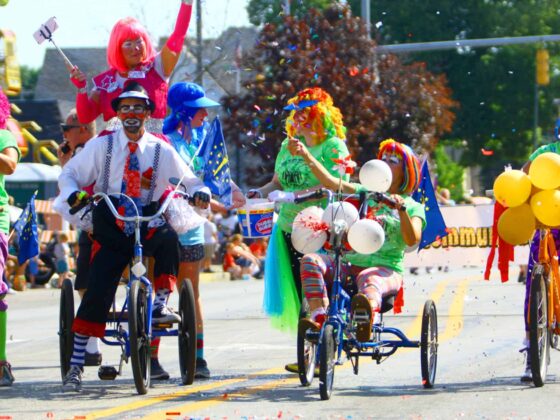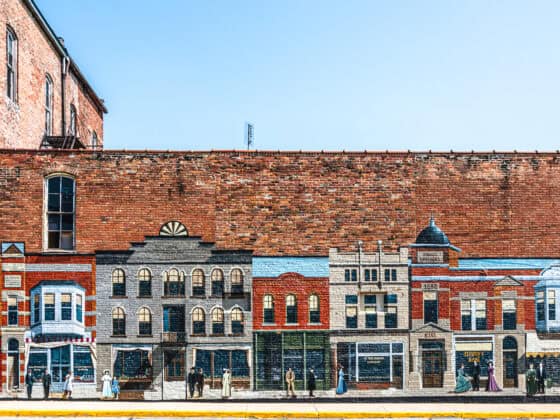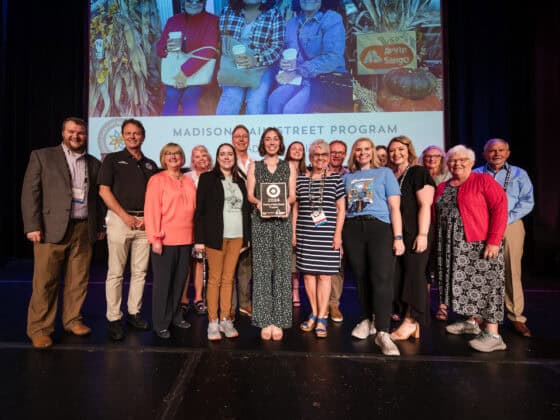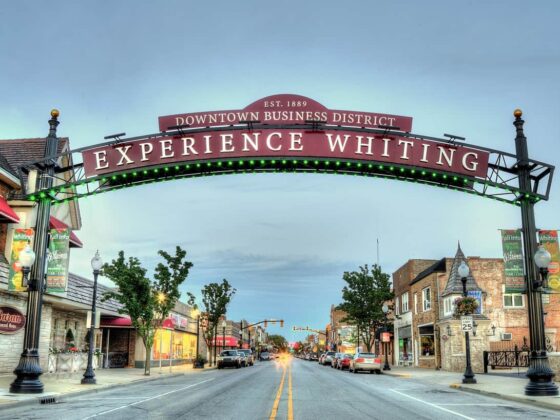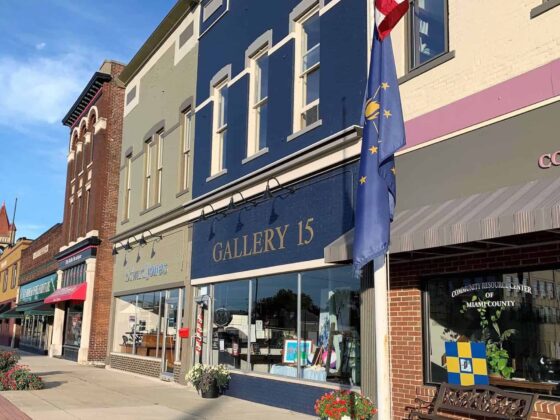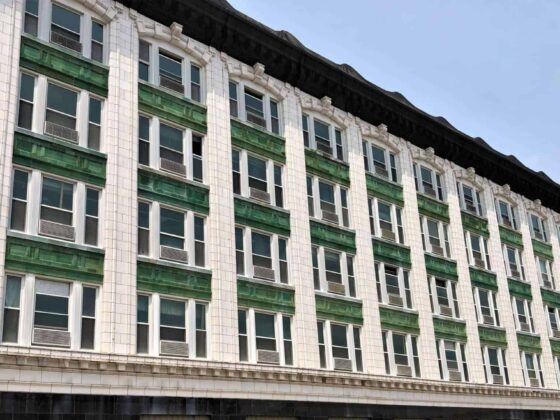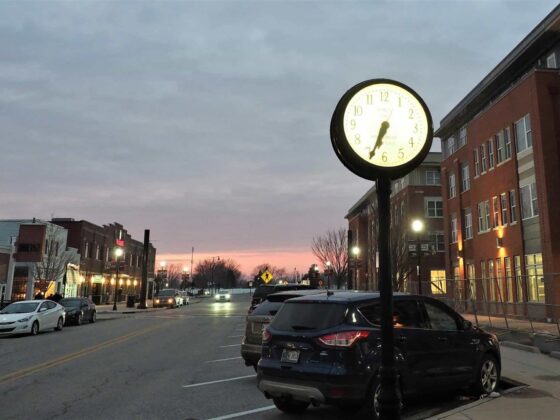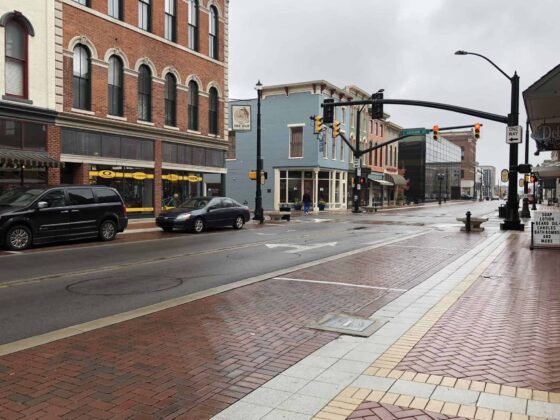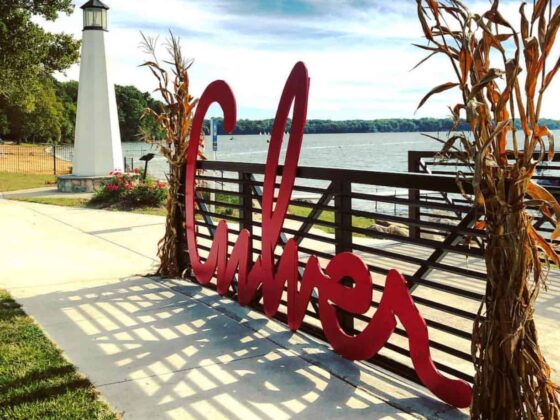By Elizabeth Granger
First in a Series—Here, find an overview of the Indiana Main Street program that revitalizes downtowns, giving them a fresh, new spirit that entices residents and visitors alike. In successive issues, we’ll introduce you to individual communities and their Main Street successes.
Mary Shaw refers to it as “Downtown 2.0.” Indiana’s downtowns revitalized, not returning to what once was but building on that past to create an even better future.
For residents, yes. For visitors, yes again.
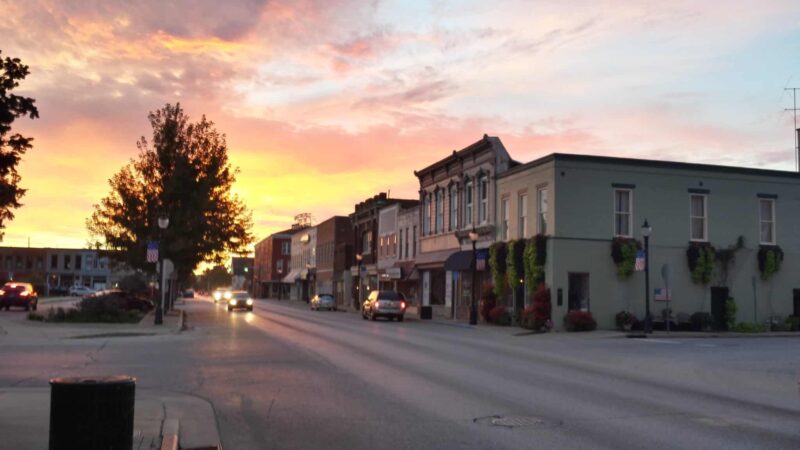
In a variety of ways that welcome both to downtowns that are—more than ever before— friendly, fun and safe. Downtowns with shopping, entertainment, art, dining, lodging—the whole package. With a definite “Wow!” factor.
With tourism the No. 1 industry in many Hoosier communities, revamped downtowns are delivering. “You don’t have to spend money to go outside your state to have a good vacation,” says Melissa Thomas, communications manager for Indiana’s Office of Community and Rural Affairs (OCRA), which overseas the successful Main Street program which has spurred downtown revitalizations.
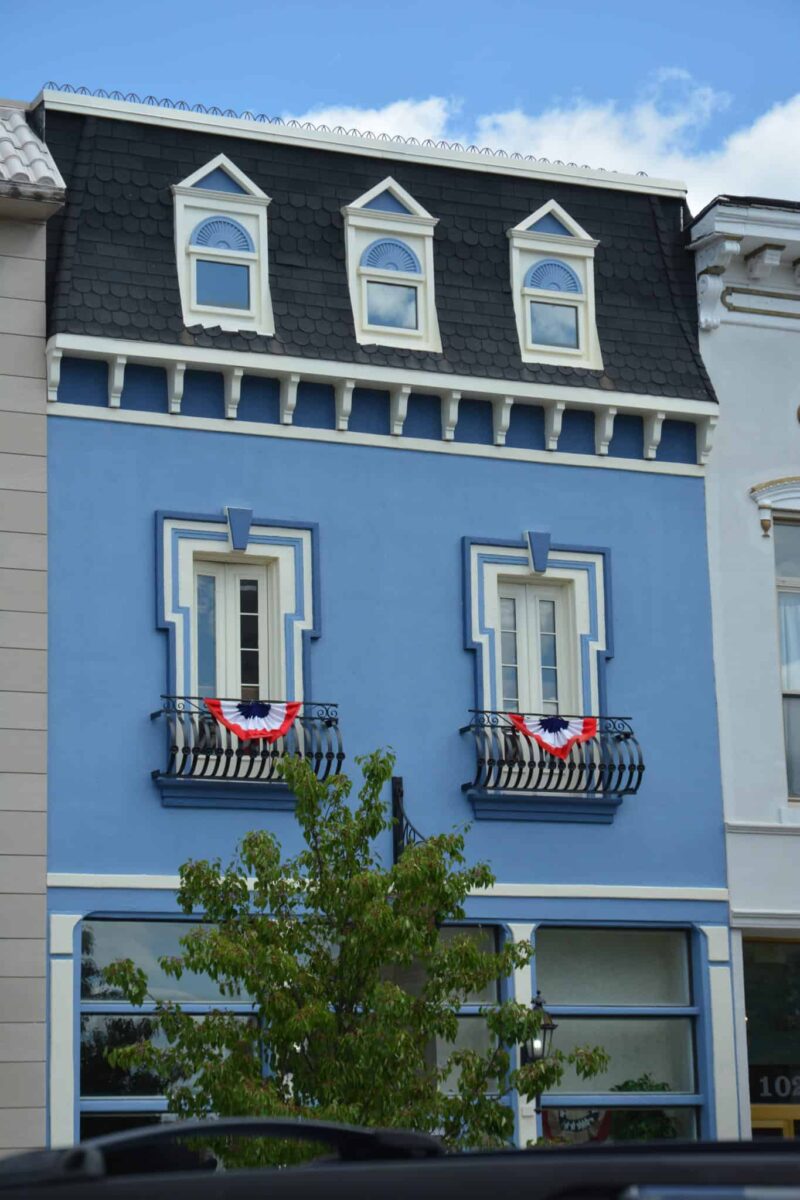
Count Bloomington among them. Erin Erdmann White of Visit Bloomington says, “A thriving downtown has limitless positive impacts on tourism.
Locally-owned shops and small business owners are able to be successful, the bustle of visitors creates a sense of vibrancy in the air, people have the opportunity to make memories over a meal or drink in the downtown restaurants and bars. Artists are able to showcase their creations in the galleries, and visitors can dance to their favorite band at an iconic music venue or belly-laugh at one of the country’s best comedy clubs. Visitors then find a downtown hotel or bed & breakfast to lay their heads so they can get up in the morning and enjoy the farmers market or a leisurely breakfast on an outdoor patio.”
And from Sherry Matlock of Visit Kokomo: “Travelers look for unique, local experiences in
the communities they visit. Kokomo’s downtown transformation has created a destination point for visitors that wasn’t there a decade ago. Downtown plays a major role in visitor attraction efforts in the community.”
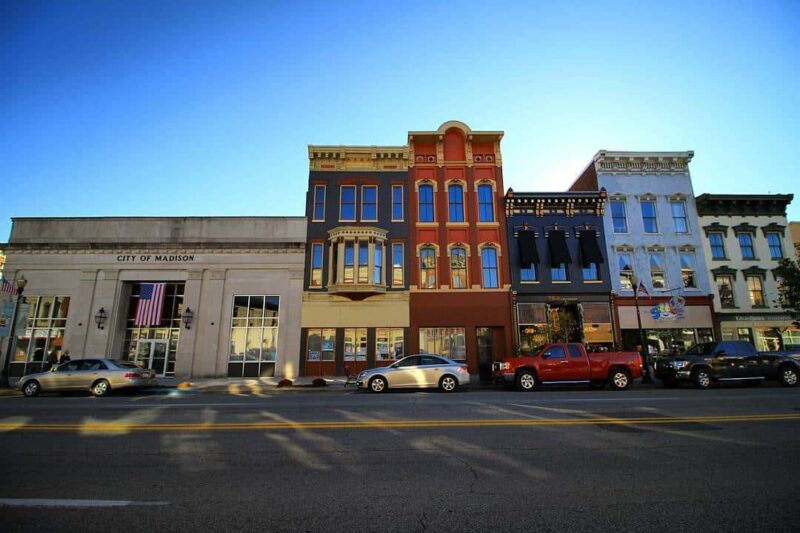
The change is happening all over the state. All over the country, actually. And helping to lead the way is the Main Street program. The National Main Street Center was established in 1980 to address the countless issues facing older and historic downtowns. Even before then—in 1976—Madison, Indiana, served as one of three pilot programs, joining Galesburg, Illinois, and Hot Springs, South Dakota. Their successes prompted the nationwide initiative of downtown revitalization.
Since then the national Main Street organization has helped more than 2,000 communities across the country bring economic vitality back downtown while celebrating their historic character and bringing communities together.
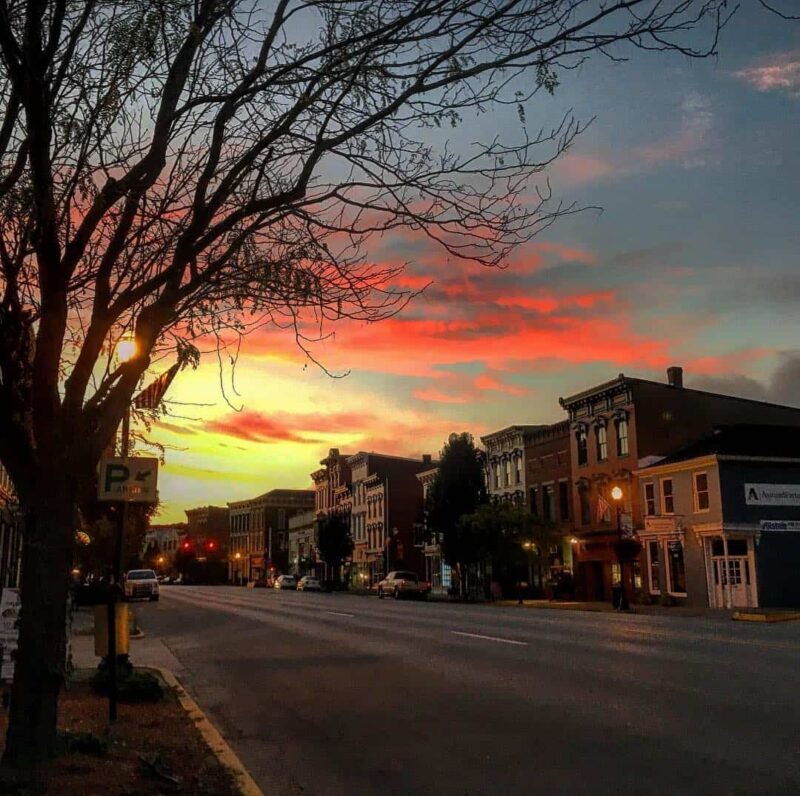
Shaw is Indiana’s state coordinator. The program is big here; Indiana has more communities involved than any other state, with 132. They are in 81 of Indiana’s 92 counties. Evansville, the state’s third largest city, is the biggest Main Street community. Coatesville, on the Hendricks County/Putnam County line, is the smallest with a population just over 500. Indiana’s newest Main Street communities are Elwood and Kirklin.
Main Street officially came to Indiana in 1985, when many downtowns had been forsaken by both residents and businesses who followed the call of the suburbs. Adjectives like “declining,” “decrepit,” “decaying,” and even “dead” were used to describe them.
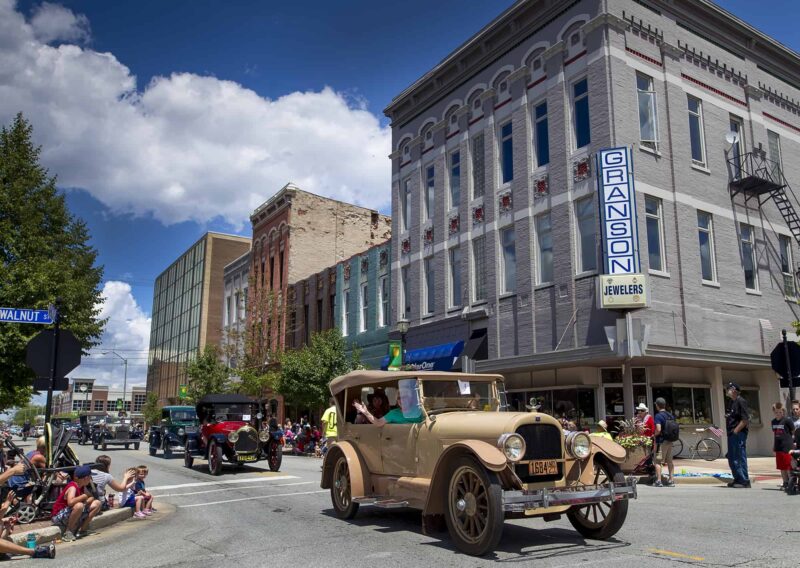
Shaw says she remembers her own home town, South Bend, of the 1970s. Its downtown was fading as fast as its suburbs were growing. And South Bend was not unusual. It was common in town after town, city after city, in not only Indiana but across the nation.
“When I was a girl, growing up in the 1970s, there was nothing downtown,” Shaw says. Maybe lawyers or insurance companies, but nothing for a family.”
The pendulum was swinging with great force toward the suburbs. Retailers abandoned their downtown roots, leaving empty buildings that were often razed.
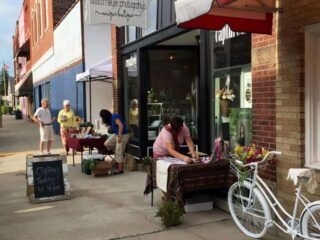
There were those who refused to accept their downtowns’ death sentences even then. They saw the majesty of what once was, and they believed it could return. But the prevailing mindset was against them.
It’s taken decades for society to see the value of their beliefs, but it is happening. “Main Street has been a catalyst for the return to downtowns,” Shaw says. “Now I seek out small towns, especially their downtowns.”
The Main Street program follows a tested plan to help revitalize or strengthen a downtown or commercial district’s economy. It fosters a bottom-up approach with locals actively working to improve their communities. OCRA, which oversees the state’s Main Street program, offers support through information, collaboration, resources, technical assistance. It provides grant monies. It hosts a multitude of Main Street forums throughout the state. The objective: to help communities shape and achieve their vision of thriving places where people want to be.

Collaboration is big at all levels, with residents and businesses within a community as well as with residents and businesses from other communities. A multifaceted approach touches on any and all aspects that impact the area—from infrastructure to entrepreneurship to renovation/revitalization to attracting talent to mentoring to engaging youth to parking to combating drug abuse to ….
The public face of the program—that is, what residents and visitors see—is often a vibrant, welcoming place to be. It’s more than shopping and socializing; people now want to live in or visit a walkable community. They embrace downtown living and lodging.
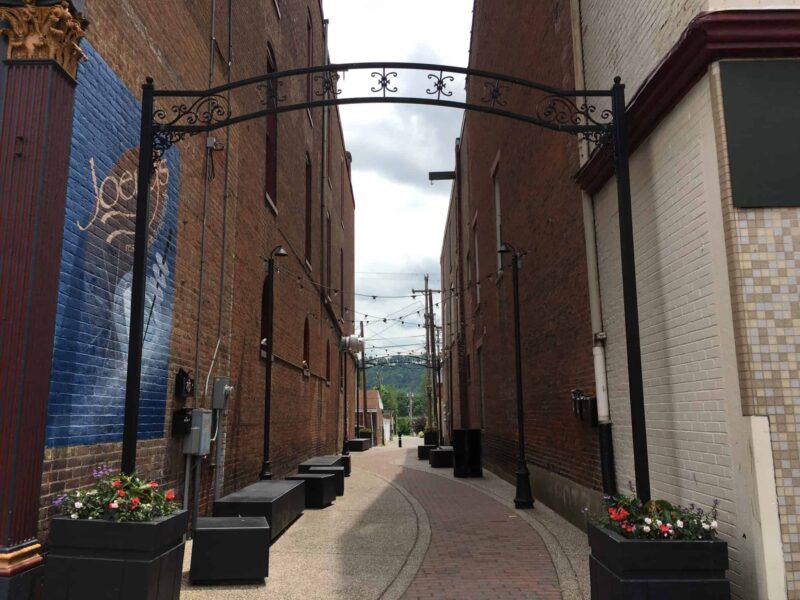
Shaw says that Millennials, in particular, support downtowns. “We have to give them credit. They’re the ones in the forefront of this movement. Many shop
owners are Millennials that grew up in those small towns and have returned. They want their kids to have that small-town experience.”
But, Shaw adds, an enhanced small-town experience. “They want to embrace change and creativity. And they welcome everyone. I think that’s the big difference. They embrace everybody.”
And, she says, they embrace new ideas. Among them, technology. Social media is getting more and more play.
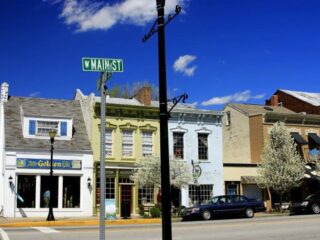
OCRA’s Thomas says the ability to post everywhere, right away, is increasingly popular—and important. “So your friends ask where it is, and then they want to visit. Being able to have that instant connection helps these small towns. We want to see it first, and then we want to go.”
Some Main Street programs have more social media followers than residents in their communities.
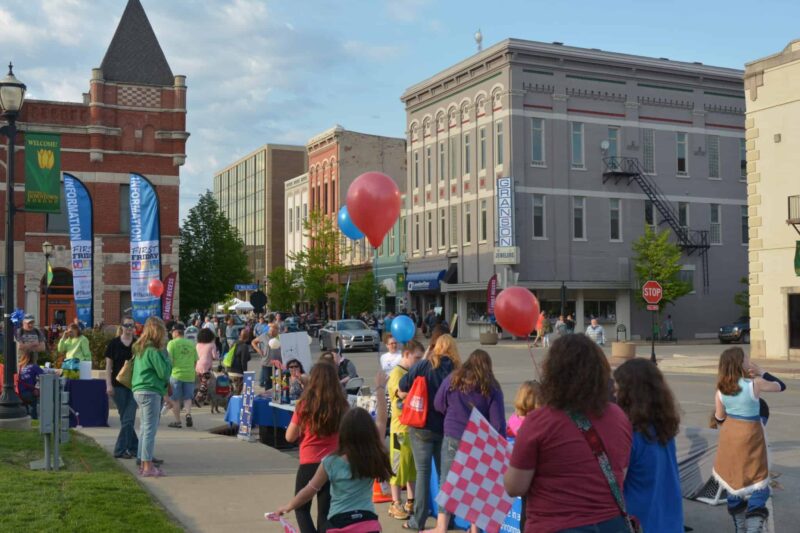
Because downtown shopping has become prized, particularly with local businesses, small-business Saturday is becoming small-business every day. Shaw says there’s definitely a change in the public mindset. “You can get goods and services downtown and support local merchants.”
Thomas adds, “People are realizing how important that is. They search out local merchants.”
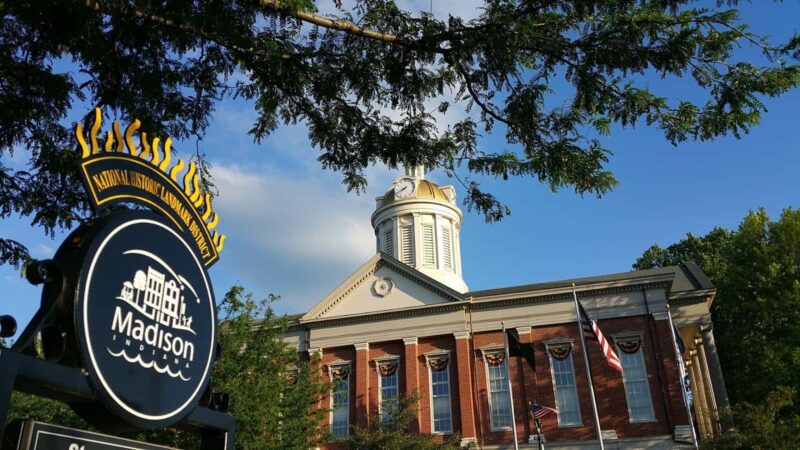
Shaw cites Lawrenceburg as a shining example for getting it right. “It has turned a corner on getting the right mix of retail, entertainment, professional services, other services. You go to their downtown and they have florists, antique shops, restaurants, convention center, hardware store, …. Main Street has done so much for that town. Shopkeepers all know about Main Street and the Main Street model and how they fit into the overall revitalization of downtown.”
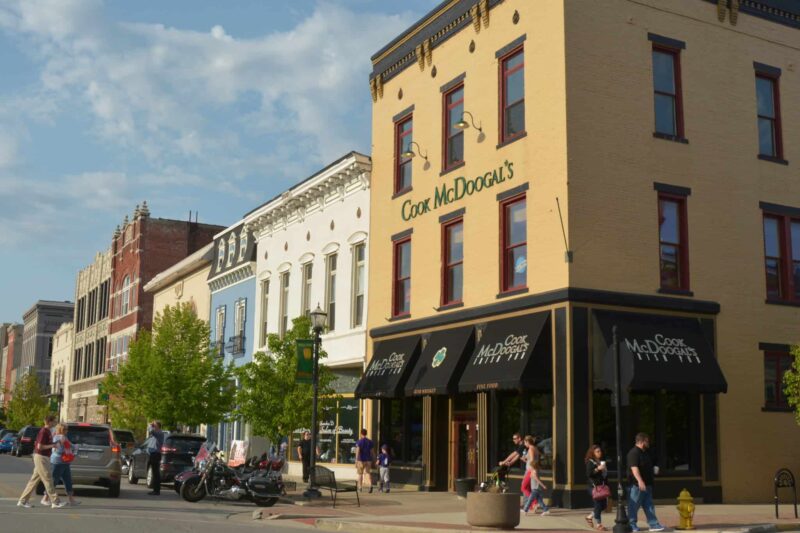
It works in town after town after town. “Success once breeds success,” Shaw continues. “When merchants see that the gift shop is doing well, and the building looks good, and the town has spent money upgrading the sidewalks and the streetscape and put in flower boxes, they’re going to want to be there.”
She says visitors will remember the small-town feel of everyone being so welcoming, and they’ll want to return. Tourism is crucial for many communities which rely on visitors to keep their economy growing.
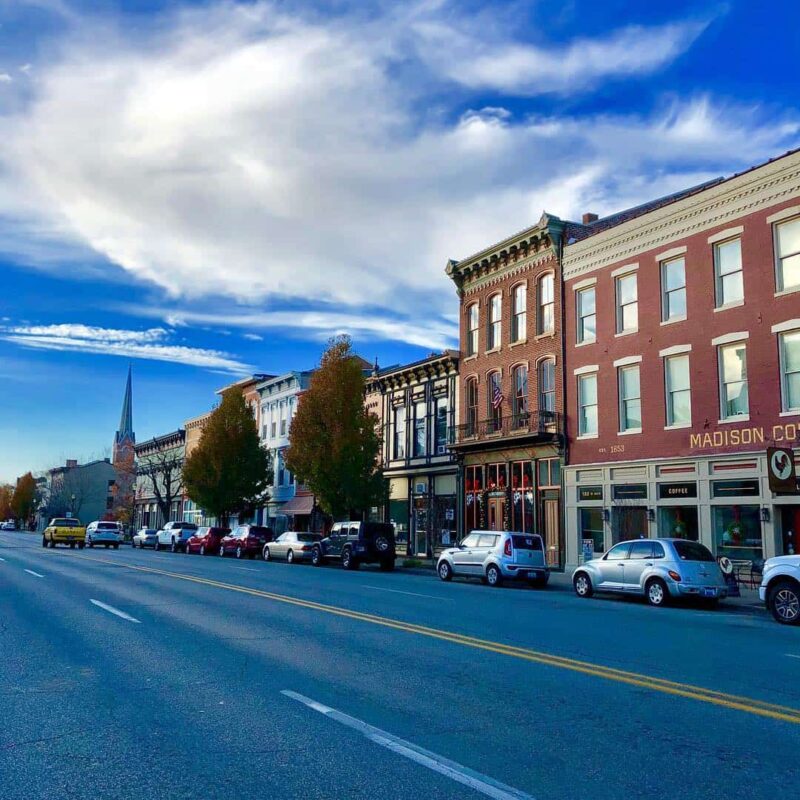
One sure winner for many communities has been the local farmers market. Shaw says, “Before, every town had a farmers market. And then farmers markets went by the wayside when people started buying in grocery stores. But in the past five years or so, farmers markets have boomed. Not just farmers selling food but a whole experiential event.”
With food, music, crafts, kids’ games, more. “It’s crazy how big these farmers markets are in Indiana,” she says. Shaw spent years in the military, some of the time in Afghanistan on an agribusiness development team. “When we walked through towns and villages to look at their markets, I was always struck by how much activity their downtowns had on market days. I’m so excited to see, in the U.S., that they’re going more toward that. People are coming downtown during market days—talking to their neighbors—meeting others.”
Thomas says, “People are becoming more health conscious. They want to know where their food is coming from, and farmers are eager to tell that story. ‘Ask the experts,’ I say—they’re usually behind the food and they’ll tell you how to prepare the food, they’ll give you ideas about how to store the food, everything you need to know.”
Some Main Street communities have niche markets, focusing on something that’s only theirs. Cambridge City has antiques; Terre Haute, the Coca-Cola bottling history; Martinsville, mineral water; Greensburg, a tree growing at the top of the courthouse; Fairmount, James Dean and the 1950s.
For some communities, the key draw is an annual event. The “Cruisin’ in Coatesville” car show and street fair will be July 21. “In the last 10 years it’s exploded,” Shaw says. “It’s helped put Coatesville on the map.”
Communities are also getting increasingly adept at finding creative uses for under-utilized space. Kokomo, for example, has repurposed its downtown alleys into clever gathering spaces for art, for technology, for the performing arts.
In reality, Main Street communities pretty much package all the Main Street principles into a pleasing experience that both residents and visitors want to repeat.
Kokomo’s Matlock touches on a myriad of tourist requests: unique boutiques, restaurants with local farm-to-fork as well as upscale offerings, historic buildings beautifully restored, public art, entertainment. Her city now delivers. “Downtown Kokomo has truly been transformed into a vibrant and thriving district,” she says.
And Bloomington now offers what many communities are still working toward. “Visitors enjoy the fact that once they arrive in downtown Bloomington, they don’t need to get back in their car until they leave to go home,“ White says.
Transformations extraordinaire. In many Hoosier communities. These are no longer your parents’ downtowns.
“Never overlook the gem in your back yard,” Shaw says.


